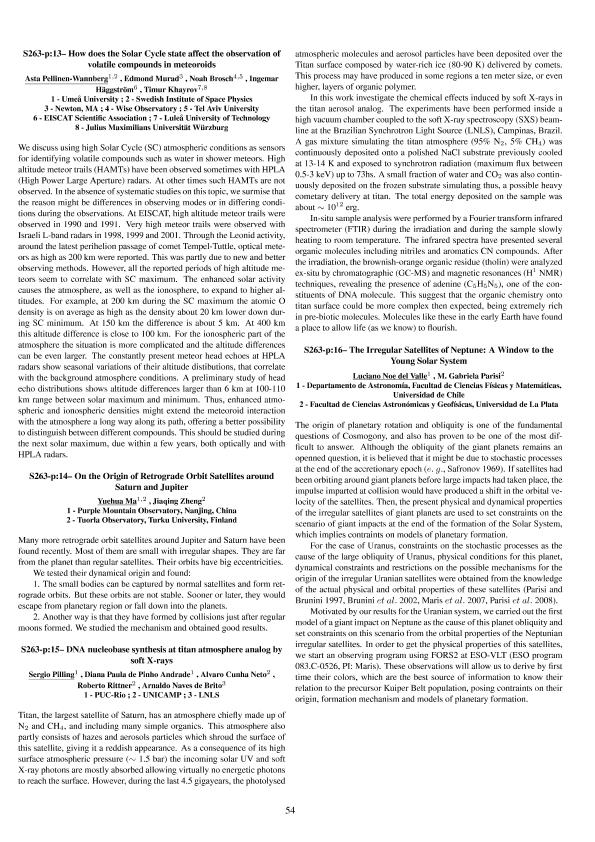Evento
The Irregular Satellites of Neptune: a window to the Young Solar System
Colaboradores:
Fernandez, Julio A.; Lazzaro, Daniela; Prialnik, Dina; Schulz, Rita
Tipo del evento:
Simposio
Nombre del evento:
IAU Symposium 263: Icy Bodies of the Solar System
Fecha del evento:
03/08/2009
Institución Organizadora:
International Astronomical Union;
Título de la revista:
Proceedings of the International Astronomical Union Symposia and Colloquia
Editorial:
Cambridge University Press
ISBN:
9780521764889
Idioma:
Inglés
Clasificación temática:
Resumen
The origin of planetary rotation and obliquity is one of the fundamental questions of Cosmogony, and also has proven to be one of the most difficult to answer. Although the obliquity of the giant planets remains an openned question, it is believed that it might be due to stochastic processes at the end of the accretionary epoch (e. g., Safronov 1969). If satellites had been orbiting around giant planets before large impacts had taken place, the impulse imparted at collision would have produced a shift in the orbital velocity of the satellites. Then, the present physical and dynamical properties of the irregular satellites of giant planets are used to set constraints on the scenario of giant impacts at the end of the formation of the Solar System, which implies contraints on models of planetary formation. For the case of Uranus, constraints on the stochastic processes as the cause of the large obliquity of Uranus, physical conditions for this planet, dynamical constraints and restrictions on the possible mechanisms for the origin of the irregular Uranian satellites were obtained from the knowledge of the actual physical and orbital properties of these satellites (Parisi and Brunini 1997, Brunini et al. 2002, Maris et al. 2007, Parisi et al. 2008). Motivated by our results for the Uranian system, we carried out the firstmodel of a giant impact on Neptune as the cause of this planet obliquity and set constraints on this scenario from the orbital properties of the Neptunian irregular satellites. In order to get the physical properties of these satellites, we start an observing program using FORS2 at ESO-VLT (ESO program 083.C-0526, PI: Maris). These observations will allow us to derive by first time their colors, which are the best source of information to know their relation to the precursor Kuiper Belt population, posing contraints on their origin, formation mechanism and models of planetary formation.
Palabras clave:
Planets and Satellites: general
Archivos asociados
Licencia
Identificadores
Colecciones
Eventos(IAR)
Eventos de INST.ARG.DE RADIOASTRONOMIA (I)
Eventos de INST.ARG.DE RADIOASTRONOMIA (I)
Citación
The Irregular Satellites of Neptune: a window to the Young Solar System; IAU Symposium 263: Icy Bodies of the Solar System; Río de Janeiro; Brasil; 2009; 54-54
Compartir




